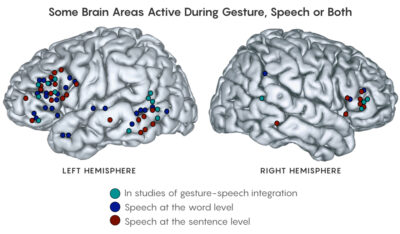
Not long ago, I went on one of my favorite podcasts — The Ezra Klein Show — to talk about burnout, workism, and our relationship to labor. In our conversation, I invoke the idea of “LARPing” your job, a phrase my partner uses to describe the way we try and show evidence that LOOK, OVER HERE, I AM WORKING. (‘LARP’= Live Action Role Playing).
You can LARP your job in person (holding lots of meetings, staying late and getting there early as a show of ‘presentism’) and digitally (sending lots of emails, spending a lot of time on Slack, or whatever group chat platform your organization uses). This piece from Vox does a good job of outlining how Slack, marketed as a “productivity tool” and “email killer” is often neither.
It’s something I’ve thought about a lot as a remote employee: how do I show that “in the office” when I’m far away, and two time zones behind the vast majority of my team? By dropping links to articles (to show that I’m reading); by commenting on other people’s links (to show that I’m reading Slack); by participating in conversations (to show that I’m engaged). Evidencing that I’m doing work instead of, well, doing work.
To be clear, I do think that Slack (and video chats) makes it possible for me to 1) Live in Montana and 2) Collaborate with my editors to publish pieces. And I also love bullshitting or discussing articles with my coworkers, and I know that my editors would say that there is no need to compulsively perform on Slack. But I think that people who do “knowledge work” — whose products are often largely ineffable — struggle with the feeling that there’s little to show, little tangible evidence, of the hours of work that they sit in front of their computers.
Hence: LARPing your job. The compulsion, I think, is heightened for those of us who worked, jobsearched, or were laid off during the post-2008 recession: we’re desperate to show that we’re worthy of a salaried job, so eager to demonstrate just how much labor and engagement we’re willing to give in exchange for full-time employment and health insurance. That’s certainly the case for me, especially in a field like culture writing, where full-time gigs are incredibly rare.
The problem, then, is that “knowledge work” rarely fits the standard, 40-hour-a-week capitalist paradigm. In “traditional” jobs, 40 hours means 40 hours of service (childcare, elder care, waiting tables, cleaning streets, making deliveries) or 40 hours of production (stamping metal, performing quality control, flipping boards, framing houses). If you want to produce 1000 widgets, you can figure out how many hours it takes to produce each widget, and how many employees you need to pay to put in those hours.
This falls apart with knowledge work. How many hours does it take to write a sermon, to figure out a legal strategy, to edit a book or write a piece of music? There’s the visible labor (the amount of time you sit at the desk, typing words that actually end up in your piece) and the invisible labor (the amount of time you spend thinking about it, the amount of paragraphs that get erased, the number of interviews you do that never make their way into the final piece). Lawyers have figured out a way to charge for the invisible labor by turning it into “billable hours,” incrementalized into 15-minute chunks. Some freelancers (for PR, graphic design, web design and other jobs that bill by the hour) do the same.
There’s a whole different set of problems that arise when you work under this “billable hours” paradigm: every hour could, theoretically, be one that you’re working and billing. But I do think that freelancers in particular have less of a compulsion to LARP their job, because who are you LARPing it for? Yourself? You already know how hard you work. Time LARPing is better spent, well, working.
The compulsion to LARP is for those who have to feel accountable to some larger salary god, one who takes earthly shape in the form of our manager, our manager’s manager, and/or our coworkers, all of whom are constantly deciding whether or not we deserve the salaried, privileged position in which we’ve found ourselves. This is largely bullshit, of course: yes, our managers do think about how much we’re producing, but only the worst of them are clocking how many hours our green dot is showing up on Slack. Most of our coworkers are too worried about LARPing their own jobs to worry about how much you’re LARPing yours.
We’re performing, in other words, largely for ourselves. Justifying to ourselves that we deserve the place that we’ve found ourselves. Justifying to ourselves that writing for the internet is a vocation that deserves steady payment. At heart, this is a manifestation of a general undervaluing of our own work: we still navigate the workplace as if getting paid to produce knowledge means we’re getting away with something, and have to do everything possible to make sure no one realizes they’ve made a massive mistake.
Of course, there are myriad cultural and societal forces that have led us to this point of disbelief. Every time someone made fun of my undergrad degree, or my dissertation, or my Ph.D. Every time someone made fun of BuzzFeed, or denigrated writing about celebrities or pop culture generally. Every time someone at a family gathering said something like “must be fun to get paid to go to the movies?” All of those messages come together to tell me that my work is either easy or pointless. No wonder I spend so much time trying to communicate how hard I work.
The thing about writing is sometimes it’s easy and sometimes it’s difficult, and sometimes that easiness is a product of years and years of thinking about a topic and sometimes that difficulty is a product of the very same thing. Sometimes there’s 14 hours of work to do in a day and sometimes there’s two. Sometimes I’m far more productive if I’m on a hike, without my phone or Slack, but just hanging out in my own mind; sometimes I’m more productive after goofing off on Twitter. When you’re working remotely, how do you “show” that you’re reading? That you’re thinking?
The best evidence of working hard has and always will be the quality of the end product. But the quality of knowledge work is often so difficult to quantify and parse that, as knowledge workers, we find ourselves doing two different jobs: the job that produces the work, and a second, shadow job of performing our labor, of making the case for our own employment, for our entire vocation, over and over again. Writing this newsletter is a great pleasure for me, but it’s also, subconsciously and consciously, part of that project.
How do we get away from this paradigm? Understanding that there are so many different types of labor, and none more or less important than any other — that’s part of it. Being a doctor is hard, being a writer is hard, but so is being a nanny or being a full-time mom or bartending or being a forest ranger. But the other key, and the most applicable for this discussion, is cultivating a workplace that’s less dependent on employees checking boxes of what “working” looks like, and more flexible to the ways that (good) work actually gets done — including (gasp) working less.
That’s the hardest thing, at least in our culture, to fathom, the hardest thing to change: that fewer working hours might produce more value. That maybe the person with less of a societally and workplace-enforced compulsion to prove themselves will produce the work that does it for them.
Original article here



 IBS is far more common than IBD, affecting an estimated 70 million Americans. Symptoms of IBS (irritable bowel syndrome), a functional GI disease, include frequent:
IBS is far more common than IBD, affecting an estimated 70 million Americans. Symptoms of IBS (irritable bowel syndrome), a functional GI disease, include frequent:


 The electrons are essentially drawn across the cytochrome oxidase system by the oxygen at the positive pole of the intracellular battery. The more oxygen in the system, the stronger the pull. Breathing exercises, eating high-oxygen foods, and living in atmospherically clean, high-oxygen environments increases our overall oxygen content. The cytochrome oxidase system exists in every cell and requires electron energy to function. This electron energy comes from plant foods as well as what we directly absorb. When the food is cooked, the basic harmonic resonance pattern of the living electron energy of the live food is at least partially destroyed. Once understanding this scientific evidence, the logical step is to eat high-electron foods such as fruits, vegetables, raw nuts and seeds, and sprouted or soaked grains. People who eat refined, cooked, highly processed foods diminish the amount of solar electrons energizing the system.
The electrons are essentially drawn across the cytochrome oxidase system by the oxygen at the positive pole of the intracellular battery. The more oxygen in the system, the stronger the pull. Breathing exercises, eating high-oxygen foods, and living in atmospherically clean, high-oxygen environments increases our overall oxygen content. The cytochrome oxidase system exists in every cell and requires electron energy to function. This electron energy comes from plant foods as well as what we directly absorb. When the food is cooked, the basic harmonic resonance pattern of the living electron energy of the live food is at least partially destroyed. Once understanding this scientific evidence, the logical step is to eat high-electron foods such as fruits, vegetables, raw nuts and seeds, and sprouted or soaked grains. People who eat refined, cooked, highly processed foods diminish the amount of solar electrons energizing the system.